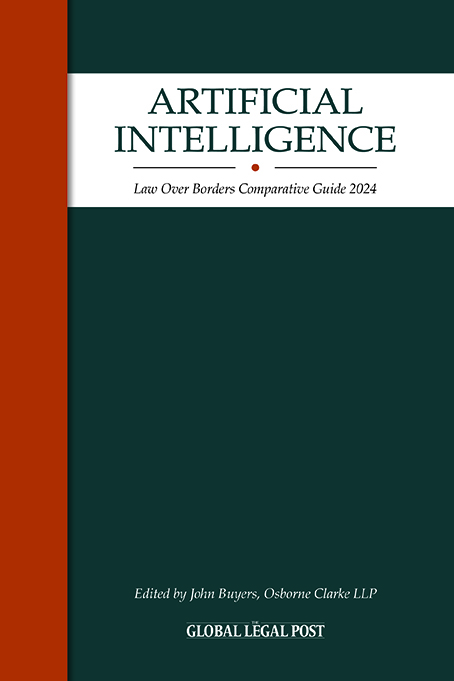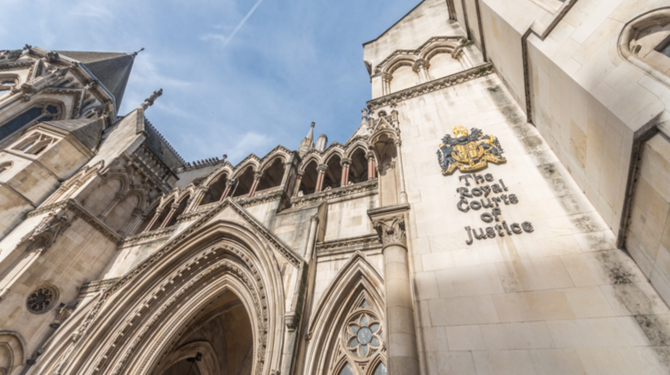Sign up for our free daily newsletter
YOUR PRIVACY - PLEASE READ CAREFULLY DATA PROTECTION STATEMENT
Below we explain how we will communicate with you. We set out how we use your data in our Privacy Policy.
Global City Media, and its associated brands will use the lawful basis of legitimate interests to use
the
contact details you have supplied to contact you regarding our publications, events, training,
reader
research, and other relevant information. We will always give you the option to opt out of our
marketing.
By clicking submit, you confirm that you understand and accept the Terms & Conditions and Privacy Policy
The rapid integration of AI-based technology into many aspects of our lives brings with it a range of interesting legal and regulatory challenges. In the world of intellectual property, it is recognised that the use of AI techniques, in particular to analyse large data sets, is capable of providing new and valuable insights that can form the foundation of patentable inventions.
The involvement of AI-based systems in the invention creation process raises fundamental questions about the concept of inventorship, and recent court cases in multiple jurisdictions question whether existing patent laws are capable of recognising non-human inventive entities.
The dilemma
The recent court cases all stem from the activities of the Artificial Inventor Project, which is supporting the prosecution of two patent applications that are forcing a discussion of inventorship by presenting the inventions as being wholly created, from original conception to realised proposal, by an AI system, which the project has dubbed “DABUS”.
The patent applications identify DABUS itself as the inventor, which has resulted in cases where the courts are ultimately being asked to decide if a machine can be recognised as an inventor under current legislation.
How are the courts reacting?
1. European Patent Office – testing the strength of a formal requirement
In the European Patent Office (EPO), the patent applications were refused at first instance on the formal ground that they failed to name an inventor. The EPO’s rationale for this was based in particular on the idea that the legal right to own a patent actually flows from the inventor. Since an AI entity is not a natural or legal person, and hence cannot possess or transfer any legal right, it cannot be an inventor. An appeal hearing on this issue is due to be heard this December.
2. UK – focus on statute language
A recently-published decision of the UK Court of Appeal held that patent law in the UK requires an inventor to be a person, and therefore that DABUS cannot be an inventor within the framework of the current law because it is a machine.
Interestingly, however, the decision contained some disagreement on the conclusion to be drawn from the issue at the heart of the appeal, which was the particular mechanism by which the UK Intellectual Property Office (UKIPO) refused the applications.
The majority view was that the relevant statutory requirements were not complied with because (a) DABUS is manifestly not a person, and (b) no recognised mechanism to explain how ownership of the invention vested in the applicant was indicated. On this latter point, the majority ruled that there was no recognised rule of law that allows intangible creations of a machine to automatically be the property of the owner of the machine.
However, the minority view was the UKIPO had exceeded its power to assess the inventorship information, and should not have raised the objections it did. The reasoning in this part of the judgement gives a view into an alternative universe in which patent applications naming AI systems as inventors could indeed pass through the UKIPO but potentially be vulnerable to later attack on the grounds of entitlement.
3. US – some commentary on policy considerations
A recent district court decision arising from a refusal by the United States Patent and Trademark Office (USPTO) to process the patent applications for failure to identify a natural person as inventor confirmed that the current wording of US patent law does not permit the term 'inventor' to be interpreted broadly enough to encompass anything other than a natural person.
The decision also included some commentary that addressed the alleged policy justifications for altering the interpretation. The court made clear that policy changes need to come from Congress, and that no indication of a change along these lines was apparent. Interestingly, the decision took care to leave open the possibility that further developments in AI technology could yet require this issue to be considered in future.
No conclusions can be drawn about the extent to which the right to the DABUS patent complies with the inventorship and ownership provisions of South African patent law
4. Australia – progressive or misguided?
An Australian court has become the first to find that an inventor (as defined by Australian patent law) need not be human. The judge in this case took the view that it was appropriate for the interpretation of the relevant provisions to evolve. In doing so, he drew parallels with how the interpretation of patent eligibility provisions has adapted over the years.
The judge also justified his interpretation in part on the object statement that was introduced into Australian patent law in 2018. The purpose of this statement is to reinforce the idea that patent law exists essentially to disseminate information and promote economic wellbeing. The judge was of the view that protection of AI-generated inventions is in line with this object, and hence supported the decision.
The judge in this case avoided the question of whether an AI entity could own anything by finding that transfer of ownership from an inventor is not necessarily required. For the DABUS inventions, the judge found that it was clear from the circumstances where the ownership lay in line with various categories of ownership set out in the law.
Success in South Africa, but was the issue considered?
One of the DABUS applications has resulted in a patent being granted in South Africa. However, this result needs to be understood in the context of how the patent system in South Africa operates.
The South African patent granting authority operates a registration system, where a patent application will be granted automatically provided it fulfils various formalities. In this context, it can be understood that a patent grant in South Africa in itself cannot be used to interpret South African patent law.
In the absence of any clear policy announcement from the South African patent granting authority, no conclusions can be drawn about the extent to which the right to the DABUS patent complies with the inventorship and ownership provisions of South African patent law.
What next?
The court decisions above largely focus on interpretation of statute and not on the fundamental question of whether a machine can invent. At present the main direction taken by the decisions reveal that current law is not flexible enough to cater for non-human inventors. This should push the debate back to the policy makers, and it is in that debate that the question of actual creation by AI should be addressed.
The US decision above referenced a report issued by the USPTO following a wide-ranging consultation on the impact of AI on the intellectual property system. This report reached the general conclusion that AI is not yet sophisticated enough to independently generate inventions. This implies the existence of a line between 'non-inventive AI', which perhaps requires some kind of human interaction to create, and 'inventive AI' where that human interaction is not required. That line is not yet well defined, and as yet no court or law making authority has needed to do so. In light of the current position of the courts, it seems that the future of this debate lies in that area rather than in adapting the interpretation of current legal provisions.
Richard Johnson is chairperson and partner at intellectual property firm Mewburn Ellis
Email your news and story ideas to: [email protected]


.jpg)







